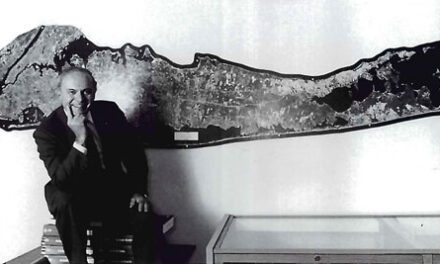What follows is an entry written by Tullio Bertoli, Commissioner of Planning in the Town of Brookhaven. This is Bertoli’s second entry on The Foggiest Idea.
RETURNING TO HUMANISTIC PLANNING
And the sublime comes down
To the spirit itself,
To the spirit itself,
The spirit and space,
The empty spirit
In vacant space.
What wine does one drink?
What bread does one eat?
In his seminal poem The American Sublime, Wallace Stevens asks us to consider how we can effectuate meaning and purpose into those components of our built environment that have the force to powerfully transform our lives. According to Stevens, the sustenance of life (“wine” and “bread”) must be found in the structure that we use to personally assign significance (“spirit”) to the “vacant space” that defines us as individuals. In a very practical sense, we live in house, on a street, in a neighborhood, as part of a village, in a township and in a regional context. Each sequential layering of topological planning forms is intended to permit us the capability to make special connections to our surroundings. This search for answers is wrought together by a process of action and reaction as well as cause and effect. Finally, the culmination of all these measures can characterize our very spirituality as it forces us to elucidate our associations to nature, our neighbors, our community, and ultimately us. Clearly, this is an undertaking that requires the courage to open one’s heart to all of life’s possibilities.
Stevens’ insinuation is that we have lost the understanding that communities must be planned through a uniquely humanistic, sustainable and spiritual approach. In this regard, Stevens has much in common with the great Renaissance architects who embraced humanist planning as a model with Utopian implications. Thoughtfully, these men believed that man was the measure of all greatness and all possibilities. The DaVinci Renaissance image of Vitruvian Man, approachable and didactic in propose, portrays man in control at the center of his earthly and celestial universes. Regrettably today that principle has been replaced by planning concepts that relegate the automobile, and not man, to be the measuring implement for the scale of our environment. Added to this aberration, we have zoning policies in place which consistently are used to separate us rather than to unite us. It is no surprise then that our recent planning that has created sprawl has also disconnected us from ourselves. There is no doubt that many of us find little solace as we are forced to interact in ways which do not ennoble our lives.
Our Planning must create communities that permit for the full range of personal human expression for those individuals who live within them. As professionals, it is our obligation to plan and build the kinds of spaces that evoke a strong sense of place in us. To this end, we can even draw upon our own life experiences. How many of us can affectionately remember a large sweeping front porch closely facing a street that became a stage set for board games on rainy days. That same street became a year round playground for activities interrupted only by the casual car that carefully skirted by. Equally, the boundaries of our neighborhood were appropriately defined by the vocal range of a mother’s call to dinner and definitely encompassed all our close friends. Expanded even further, we belonged as part of a village whose strong sense of community pervaded every event and whose identity allowed us to enlarge our private domain into the public realm. All of these recollections and their spatial implications have validity in a humanistic design approach for they create purposeful connotations that can be carried for a lifetime.
There is no doubt that we must enthuse value into our environs in a manner that strengthens our individual spiritual well being and that supplants the negative impacts of our existing status quo. Our future planning must reconcile those areas that are suitable for growth in order to balance them with those areas deemed worth of preservation. Perhaps we must even transcend to an appreciation of Emersonian Nature before we truly begin to resolve this intricate balance. But the process for a more radical change starts when we first acknowledge a much gentler manifesto: That our planning must be based upon humanistic values. Wallace Steven’s poem correctly suggests that we must struggle to square our understanding of the inspirational in determining our built environment. We must search for personal connections so that we can enrich the quality of our lives and of those individuals that we love. And that is profoundly instinctual, human and sublime.











